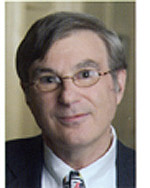Birth and Rebirth Through Genesis: A Timeless Theological Conversation, Vol. 1: Genesis 1-3 by Rabbi Michael L. Samuel, Aeon Publishing, ISBN 978-1-4563-0171-3 ©2011, p. 495, including excursuses, bibliography, and index; $20.70.
By Fred Reiss, Ed.D.

WINCHESTER, California — The biblical narrator of the first three chapters of Genesis, whoever he may be: Moses at God’s direction, a divinely inspired priest, or even a scribe recording the most ancient mythology of the Hebrew people, begins with a simple, yet profound sentence, “In the beginning, God created the heavens and the earth.” But, what does this sentence imply and what does it mean? The implication is that there is a creator, whose name is God, and who worked alone to fashion all that there is. And, when was the beginning? What did God use to build the heavens and earth? Were the heavens and earth created from the same thing? Explanations about the allusions and applications of the Torah, the Five Books of Moses, if the Talmudic sages are to be believed, go back to Mt. Sinai in the form of a God-given oral law. Written comments about the Torah’s meaning began about the time of Philo, in the latter part of the first century BCE. Since then hundreds of thousands of pages have been written to explain what the Torah “really” means.
Birth and Rebirth Through Genesis written by Rabbi Michael L. Samuel, a pulpit Rabbi who is descended from a long line of distinguished Rabbis and a graduate of an Orthodox seminary, is not another commentary on the Torah, but rather a meta-analysis of commentaries that offer comprehension and insight on the first three chapters of the Book of Genesis, which cover from creation through the Expulsion from the Garden of Eden.
Judging from Rabbi Samuel’s background, one would expect to read a series of explanations only from main-line orthodoxy, but this is not the case. In Birth and Rebirth Through Genesis’ lengthy introduction, Rabbi Samuel examines the Genesis stories as myth, comparing them to other similar stories found in the Middle East and explores and analyzes the Genesis stories from the perspective of the four-level of interpretation suggested by the rabbinic sages by presenting a wide spectrum of Jewish and non-Jewish sources, covering the earliest interpretations through the modern and post-modern critical approaches of Torah criticism. In the middle section, which examines the passages of Genesis 1-3, Rabbi Samuel draws from his extensive knowledge of biblical commentaries to provide the reader with extensive and comprehensive understandings about these passages. The reader is just as likely to find an interpretation by a Hasidic master as a quote from a Hindu text or a quote from the Zohar or Friedrich Nietzsche. In the final section, an appendix, which he calls, Excursus, Rabbi Samuel provides the reader with additional thought-provoking material, which sometimes offers more interpretations and sometimes asks deep and fundamental questions about the biblical text.
Readers of Birth and Rebirth Through Genesis are treated to a superb variety of interpretations, perspectives, and analyses, all of which shows why the Bible is still the most widely-read, yet among the least comprehended books.
**
Dr. Fred Reiss is a retired public and Hebrew school teacher and administrator. He is the author of The Standard Guide to the Jewish and Civil Calendars; Ancient Secrets of Creation: Sepher Yetzira, the Book that Started Kabbalah, Revealed; and Reclaiming the Messiah. He may be contacted at fred.reiss@sdjewishworld.com